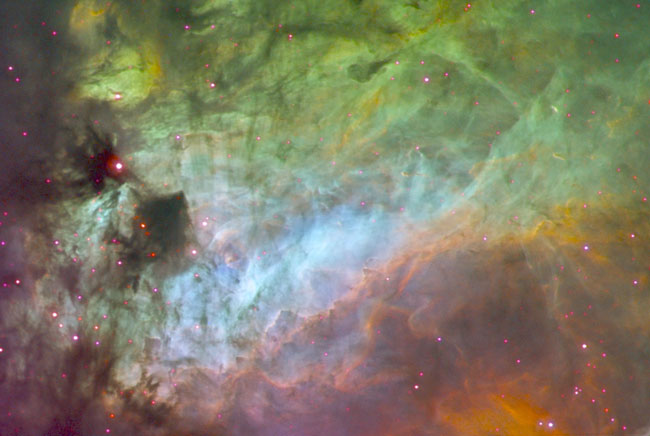Credit & Copyright: Russell Croman
Explanation:
In the depths of the
dark clouds of
dust and
molecular gas known as
M17,
stars continue to form.
Also known as the Omega Nebula and Horseshoe Nebula,
the darkness of M17's
molecular clouds results from background starlight
being absorbed by thick filaments of carbon-based smoke-sized
dust.
As bright
massive stars form,
they produce intense and
energetic light that
slowly boils away the dark shroud.
Colors in the
above image were picked to highlight specific
elements that emit nebular light: red indicates emission from
sulfur,
green from
hydrogen,
and blue from
oxygen.
The Swan Nebula
is visible with binoculars towards the
constellation of Sagittarius, lies 5000 light-years away, and spans 20 light-years across.
1999 2000 2001 2002 2003 2004 2005 2006 2007 2008 2009 2010 2011 2012 2013 2014 2015 2016 2017 2018 2019 2020 2021 2022 2023 2024 2025 |
Январь Февраль Март Апрель Май Июнь Июль Август Сентябрь Октябрь Ноябрь Декабрь |
NASA Web Site Statements, Warnings, and Disclaimers
NASA Official: Jay Norris. Specific rights apply.
A service of: LHEA at NASA / GSFC
& Michigan Tech. U.
|
Публикации с ключевыми словами:
M 17 - nebula - туманность
Публикации со словами: M 17 - nebula - туманность | |
См. также:
Все публикации на ту же тему >> | |
